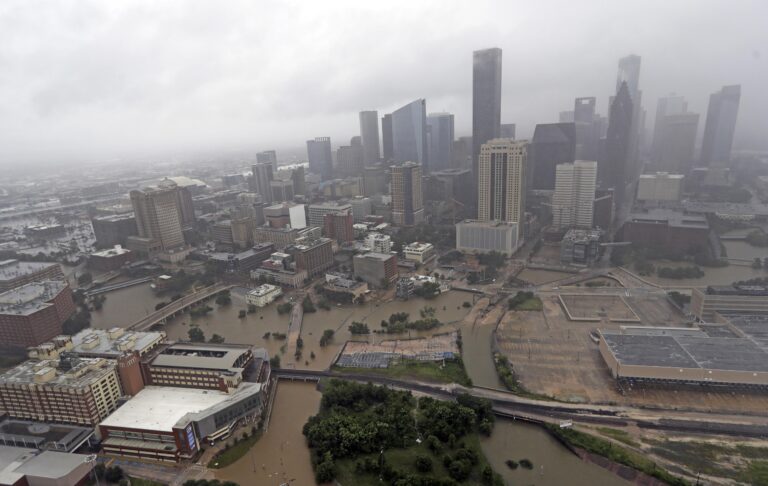Houston’s Accelerated Land Subsidence: Causes, Consequences, and Solutions
Understanding Houston’s Accelerated Ground Sinking Linked to Groundwater Use
Recent research has identified Houston as the fastest-sinking major city in the United States, a trend largely attributed to extensive groundwater withdrawal to support its booming population and industrial sectors. Geotechnical data reveal that some parts of Houston are subsiding at rates nearing one inch annually, significantly surpassing subsidence levels observed in comparable urban areas. This rapid ground settlement threatens the stability of critical infrastructure, including roads, pipelines, and buildings, leading to increased repair costs and heightened vulnerability to structural damage.
Experts stress the importance of adopting sustainable water management practices to curb further land sinking. The study highlights the varying degrees of subsidence across Houston’s diverse zones:
- Industrial districts: Intense groundwater extraction has caused up to a foot of subsidence over ten years.
- Residential neighborhoods: Moderate sinking driven by household and small business water consumption.
- Peripheral and rural areas: Emerging subsidence signs as water demand grows with urban sprawl.
| Location | Average Subsidence (inches/year) | Water Withdrawal (million gallons/day) |
|---|---|---|
| Downtown Houston | 0.9 | 75 |
| Midtown | 0.7 | 48 |
| West Houston | 0.8 | 55 |
| Suburban Outskirts | 0.3 | 30 |
How Urban Expansion Intensifies Houston’s Land Subsidence
Houston’s rapid urbanization has played a pivotal role in accelerating land subsidence. The replacement of natural, permeable surfaces with impermeable materials like concrete and asphalt disrupts the natural water absorption process, leading to increased compaction of the clay-rich soils beneath the city. This soil compression is further aggravated by the heavy extraction of groundwater to meet the demands of residential, commercial, and industrial growth. The combined effect not only undermines the physical ground but also jeopardizes the integrity of infrastructure and elevates flood risks, especially in low-lying districts.
Primary factors contributing to increased subsidence include:
- Intensive groundwater pumping in densely inhabited zones
- Conversion of green spaces into impervious urban landscapes, reducing soil moisture retention
- Rapid development of commercial and residential properties without sufficient soil stabilization
| Urban Activity | Impact on Subsidence | Most Affected Areas |
|---|---|---|
| Commercial Development | Significant soil disturbance and compaction | Central Houston |
| Groundwater Extraction | Accelerated compression of clay layers | Western suburbs |
| Urban Sprawl | Loss of permeable land surfaces | Outlying neighborhoods |
Initiatives by Authorities and Communities to Address Houston’s Subsidence Crisis
In response to the escalating subsidence rates, local and state agencies have ramped up regulations aimed at curbing groundwater extraction. The Region H Water Planning Group has enacted policies encouraging reduced dependence on aquifers by promoting alternative water sources such as surface water and rainwater collection systems. Public education campaigns are also underway to inform residents and businesses about the importance of conserving water and the long-term dangers of excessive groundwater use.
Partnerships between environmental groups and community leaders have fostered green infrastructure projects designed to counteract subsidence while enhancing urban resilience. These efforts include:
- Rehabilitating wetlands and floodplains to stabilize soil and absorb stormwater
- Implementing permeable pavement solutions to facilitate groundwater recharge and reduce runoff
- Launching urban forestry programs to improve soil cohesion and increase evapotranspiration
| Initiative | Responsible Entity | Outcomes |
|---|---|---|
| Groundwater Regulation Enforcement | Texas Water Development Board | 15% reduction in aquifer depletion |
| Green Infrastructure Implementation | Houston Parks Board | Enhanced soil stability and flood mitigation |
| Water Conservation Awareness | Local Environmental NGOs | Engaged over 40,000 residents |
Advancing Sustainable Water Practices and Infrastructure Resilience in Houston
Experts advocate for a comprehensive strategy combining water conservation, infrastructure modernization, and innovative technologies to combat Houston’s subsidence challenges. Expanding water reuse initiatives—such as greywater recycling and rainwater harvesting—can substantially decrease groundwater demand, the primary cause of land sinking. Moreover, upgrading aging water infrastructure with durable, corrosion-resistant materials will reduce leaks and contamination risks, preserving both water quality and urban structural integrity.
Current and proposed measures shaping Houston’s sustainable water future include:
- Widespread adoption of green infrastructure like bioswales and permeable surfaces to boost natural groundwater replenishment
- Deployment of smart water monitoring systems utilizing IoT sensors for rapid leak detection and repair
- Incentive programs encouraging installation of water-efficient appliances in homes and businesses
- Collaborative regional planning to harmonize urban growth with environmental stewardship
| Strategy | Expected Benefit | Projected Completion |
|---|---|---|
| Expansion of Water Reuse Programs | Lower groundwater extraction by 25% | 2028 |
| Smart Leak Detection Technology | Reduce water loss by 40% | 2025 |
| Green Infrastructure Development | Increase groundwater recharge by 15% | 2030 |
Summary: The Path Forward for Houston’s Land Stability and Water Security
As Houston confronts the pressing issue of rapid land subsidence, this comprehensive study highlights the critical need for integrated solutions that address both the causes and consequences of ground sinking. Coordinated efforts among policymakers, scientists, and the community are essential to implement sustainable water management and resilient infrastructure upgrades. With Houston currently holding the unfortunate distinction of the fastest-sinking major city in the nation, proactive and innovative measures are imperative to safeguard its infrastructure, environment, and future growth potential.




